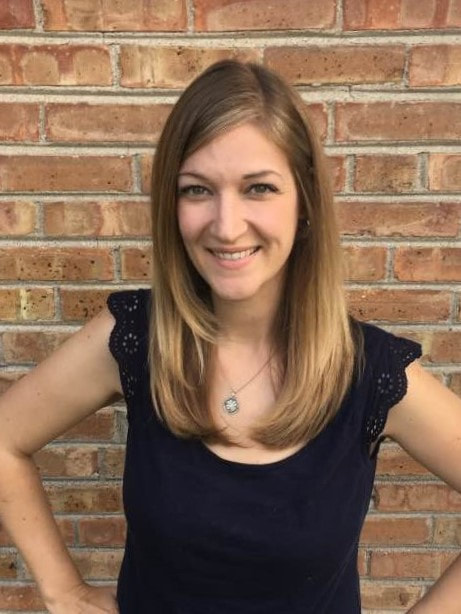|
This article was first published on the Global Lyme Alliance blog on October 30th, 2017. Most of the links on this post are informational, but a few are affiliate links to help maintain this website. My dog Scooter follows wherever I go. If I'm sitting on the couch, he's lying there right next to me. If I'm in in the kitchen cooking, he's standing there waiting for me to drop him some crumbs. On days when I'm in bed, he's curled up by my side as close to me as possible. He's like my little security blanket (who barks a lot). I didn't grow up with pets. In fact, I was scared of or indifferent to dogs for most of my life. It was my husband who wanted a dog. I felt like it would be a burden on our busy lives and too much work. Despite my hesitations, I started looking on the website Petfinder, a site that matches shelter dogs with families. I quickly warmed up to the idea of providing one of these big-eyed fur-balls with a loving home. When I came across Nolen's profile he was eight weeks old and weighed only seven pounds. I'd thought about contacting the shelter about other dogs I'd seen on the website, but I never did. Once I saw the darling white puppy with the two black eye patches, I immediately emailed the shelter. I was told that Nolen was ours. We changed his name to Scooter and he's been our constant companion for nine years. During the last three of those years, I’ve been really sick with Lyme disease. I've loved Scooter from day one, but in these last three years, I've come to really appreciate on a new deep level the joy he has brought into my life. It's a proven fact that pets help us heal. Just petting your animal all by itself is know to lower blood pressure. It will also release the relaxation hormone oxytocin in your body and decrease the stress hormone cortisol. Studies also show people with pets are less likely to feel lonely and more likely to feel happier. On my worst days, Scooter is the one thing that can make me smile. His silly little quirks, like spending ten minutes forming a blanket into a bed or running to fetch a ball and never bringing it back, always boost my mood. Every pet has a different personality and can make us laugh when little else in life can. After I became ill, I left my full-time job for a part-time job. Now I'm home a lot more. Since my husband works full-time and we don't have children, Scooter keeps me company and keeps me from feeling isolated. Even if he can't talk, I know he's always there. He also forces me to go outside when he needs a walk. He doesn't know that I have a chronic illness, and his needs aren't going to wait for me to feel better. Sometimes I have no energy left and it's incredibly difficult, but at least it gets me out in the fresh air and moving my stiff muscles and joints. Scooter allows me to care for someone other than myself. Sometimes I feel helpless like I'm not contributing, but pets are relatively easy to take care of and it's one simple way we can give to something beyond our basic needs. Scooter needs to be fed twice a day and given a lot of love, which even on bad days is something I can handle. It's true that pets are highly empathetic. They can sense when you are sad or in pain. When I'm down, Scooter won't leave my side. I don't know how he knows, but he knows. If I'm crying, he licks the tears away from my face. I wish people were as sensitive to others' feeling as he is to mine. Maybe then there wouldn't be so much sadness among those fighting chronic illnesses, a community that often feels completely feeling invisible to society at large. Scrolling through other Lyme patients blogs and social media, there are so many posts about our with four-legged friends. It's clear I'm not the only one whose pet is my everything. When I walk through the door and Scooter's face lights up, when he jumps up for a pat on the head, I forget about my illness, even if just for a moment. “The greatest pleasure of a dog is that you may make a fool out of yourself with him and not only will he not scold you, but he will make a fool of himself, too.” - Samuel Butler
0 Comments
This article was reprinted on ProHealth in 2017. It was later removed for reasons outlined in this notice. Most of the links on this post are informational, but a few are affiliate links to help maintain this website. Last week I went to a yoga class with a plank sequence that went on for twenty minutes. While the rest of the class did low plank, high plank, side plank, and one-legged plank, I was in child's pose. There were at least two people in the class over seventy-five who seemed to have no problem with the planks. At first I was embarrassed being folded up in a little ball while the others were sweating through their gym clothes, but then I remembered—my challenge was just in getting there. When I walk into a yoga studio there is no indication from my outward appearance I’ll be the one in child's pose half the class. I'm usually one of the youngest people in the class. The reason I struggle is because, in addition to Lyme, I have an autoimmune condition called SAPHO Syndrome. It's a type of reactive arthritis that attacks my muscles, joints, and bones. Over time, this extremely rare illness caused fusion in my lumbar spine and sacral joints. I also have fusion in my clavicle, limiting the range of motion in my shoulders. I'm lucky if I can just touch a block in forward fold. SAPHO also causes chronic pain. In spite of my physical limitations, I will never stop going to yoga. For me, the positives far outweigh the negatives. I fell in love with yoga, when I bought a DVD called Yoga Conditioning for Weight Loss to get in shape for my wedding 10 years ago, but it was only after I became ill that I truly understood the benefits of regular practice. When I'm in yoga class, I am at peace. My sympathetic nervous system, or "fight or flight" reflex shuts down and puts me in the healing state of regulation. It's the only type of exercise I feel comfortable doing with my condition, because I don't have to worry that it will put a strain on my already taxed immune system. Yoga also helps me maintain the range of motion I still have, and hopefully will help me gain some back. With regular practice I'm able to inch the tiniest bit closer to touching my toes. In addition to adding flexibility, the stretches ease and prevent pain. Like many people with Lyme and related autoimmune disorders I also have chronic fatigue, which means most days I don't have the energy to go to yoga and after I finish class, I'm exhausted. I usually only make it to one or two classes a week. It takes a lot of motivation to get myself to go, but when I'm done I feel so accomplished--exhausted--but accomplished. I used to worry that the teacher or other students would think I was lazy or not trying, but through yoga I've learned to listen to myself. Now, I don't worry about what other people think, and simply do what my body tells me it needs. For other people with limitations who have been considering yoga, I encourage you to try it. There are chair, gentle, restorative, and slow flow classes at most gyms and studios. These classes are designed for beginners or those of us who need to take it easy. You can slowly work your way up to the next level. For those of you who are intimidated by a group class, private sessions may be an option. There are also certified yoga therapists, who meet individually with clients and use yoga poses and breathing techniques to treat emotional and physical ailments. It's also important to note that using pose modifications and props help you get the most out of your practice. Don't be ashamed to use a block or a strap—even the most experienced yogis use them to deepen poses. When I reach my limit, I simply go into child's pose and rest. Make sure you communicate your physical restrictions with the instructor before class. At the end of each class when I bow to the teacher and my classmates and say, "namaste," in my head I always say the translation, "the divine in me blesses and honors the divine in you." We're all sacred beings, and no one in any yoga class is better than anyone else based on ability or flexibility. What's important is showing up and listening to your body. Remember, honoring yourself is the honoring the divine. "Yoga is not about touching your toes, it is what you learn on the way down." - Jigar Gor This article was first published on The Mighty on October 9th, 2017. Most of the links on this post are informational, but a few are affiliate links to help maintain this website. Recently, I received a reply on Twitter to an article I'd written about living with Lyme disease. It said, "So true. So powerful. Thank you for writing this (green heart emoji)." Right away I knew this reply was from a fellow Lyme patient. The green heart emoji might not mean anything to most people, but for the Lyme disease community it’s like our secret handshake. Not surprisingly, the Lyme community chose lime green as our awareness color. It's a cute play on a homonym. We use limes to represent many things. For example, one of our biggest fundraisers, The Lyme Disease Challenge, is to take a bite out of a lime and post a picture or video on social media. Currently, there is no lime emoji, so instead we use the green heart, which on some operating systems appears lime green. Other groups of people use the green heart emoji, but in our corner of the internet we have claimed it as our own. Many of us put a green heart in our social media profiles to symbolize our Lyme warrior status and when we write messages to one another many of us put a green heart at the end of the message to show we understand. Even large Lyme non-profit organizations, like the Global Lyme Alliance, use the green heart in their tweets and other social media posts. This practice has spread far and wide throughout the Lyme community. My Lyme story echoes most Lyme stories. From the time I first started seeking medical treatment for my strange symptoms, 10 years passed before I got a diagnosis. When I was finally diagnosed with Lyme, I went from being isolated to having a huge community of other people like me. Chronic Lyme disease is often denied by the mainstream medical community. They refer to it as post-treatment Lyme disease syndrome and say there is no treatment. Most of us with chronic Lyme disease were not willing to accept that fate, and have created online and community support groups to help locate knowledgeable doctors and compare symptoms and treatments. I often turn to the online support group in Illinois when a new symptom arises. Usually someone else has experienced the same symptom and can point me in the right direction. The online community is also wonderful for those really bad days when I just need to vent or have a cyber-shoulder to cry on. When I first started my blog and social media accounts I didn't know about the green heart, but slowly I noticed that after each tweet or direct message there was that heart. Soon, I started to use it, too, and I liked how it added something to the message, like a winky face, but just for Lyme. Eventually, I added it to my Twitter and Instagram profiles and when people came upon my profile they already knew a little bit about me and the type of symptoms I was dealing with. The green heart emoji is a little symbol of what we all face together and a small act of solidarity and love. Lyme patients, let's keep spreading the love across the internet, one green heart at a time. "No beauty shines brighter than that of a good heart." - Unknown |
WelcomeI'm Kerry (She/Her/Hers) and I am a licensed therapist, group facilitator, poet, writer, & speaker. This is a place to acknowledge and validate our suffering and trauma, while also learning how to turn toward aliveness and spaciousness. Categories
All
Archives
April 2024
|
|
Copyright © 2024 Kerry J Heckman All rights reserved. Disclaimer.
|
|





 RSS Feed
RSS Feed